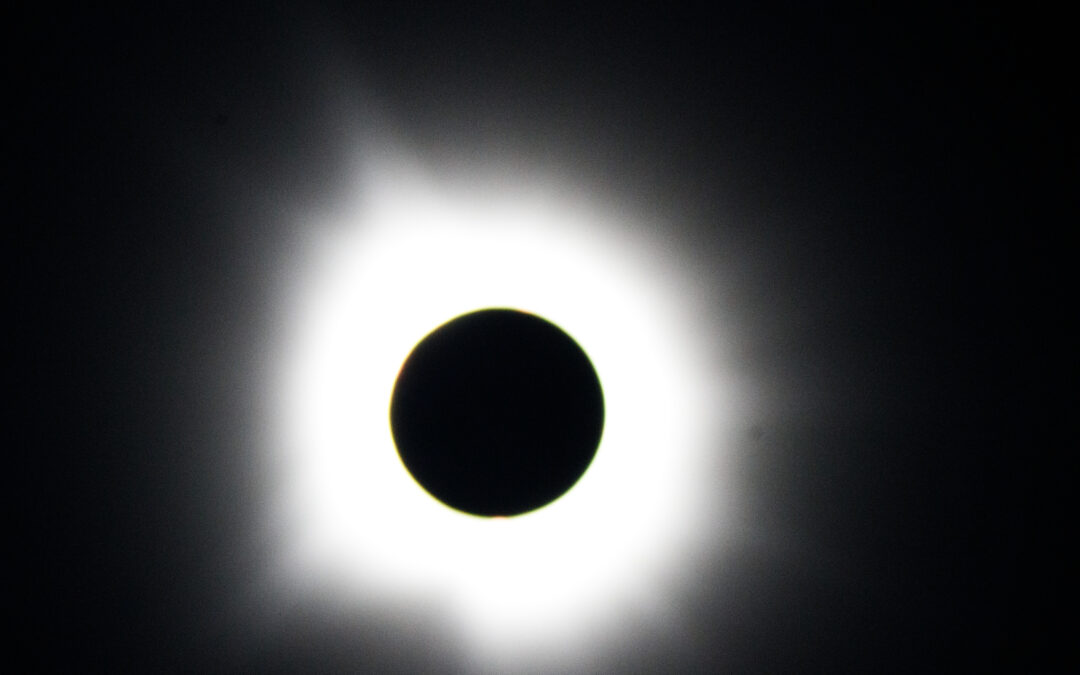I traveled across 2/3 of the country with my family to see the total solar eclipse, staying with many friends along the way. Our initial destination was Dallas. Two days before the eclipse, however, cloud cover models still forecasted lots of clouds over Texas. From Denver we pivoted our trajectory straight eastward instead of going any further south. Because it was no longer possible to find reasonable accommodations close to the path of totality, we stayed in Kansas an extra night, waking up at 2am on April 8 to drive to a place we could witness the main event. We successfully avoided pre-eclipse traffic and found ourselves in Poplar Bluff, Missouri, with several hours to spare.
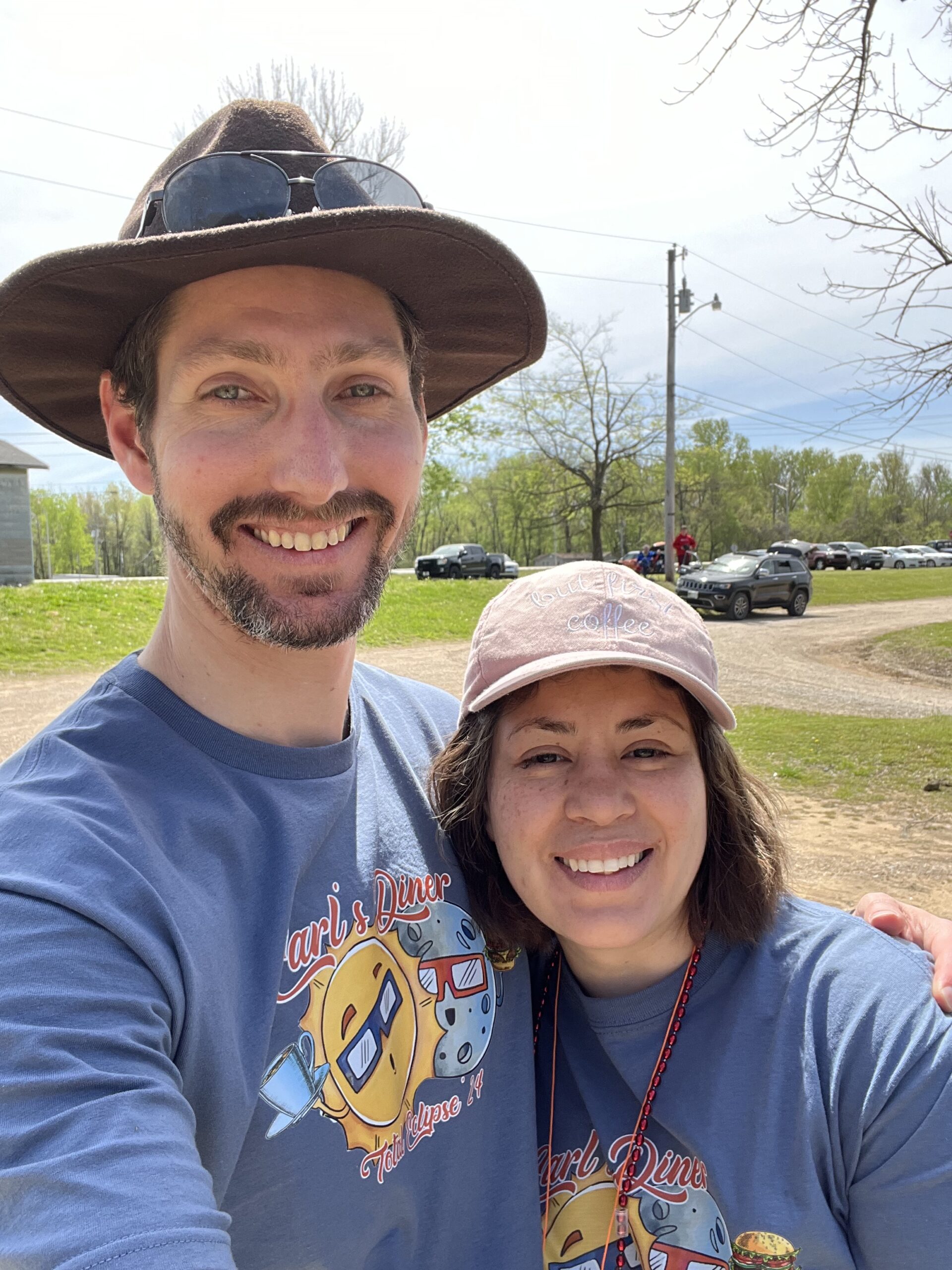
At Poplar Bluff, the duration of totality was to be 4 minutes and 8 seconds, which their town’s website boasted was “more time in totality than any other sizable community.”
After a refreshing breakfast at Earl’s Diner (where my wife found an excuse to get us matching T-shirts and my kids got a bunch of free swag, including eclipse glasses), we were among the first dozen vehicles by Black River at Sportsman’s Park. It was a great location to wait for the eclipse to start.
We got out our equipment: mainly a camera, binoculars, and eclipse glasses. Because my wife is a professional photographer (see her website Liliacreativity), I let her do the picture-taking with a super-long lens I got in 2017. This is probably the second time that lens has been used. In 2017 I also made solar filters for that lens and for my Celestron binoculars, and these still worked fine. With the filtered binoculars, I did see a few sunspots.

I haven’t yet taught my kids an astronomy course, but they’ll be adults before the next time a total solar eclipse crosses the US. My 4-year-old kept insisting what he was seeing through the eclipse glasses was not the Sun but a “Cheese Moon”.
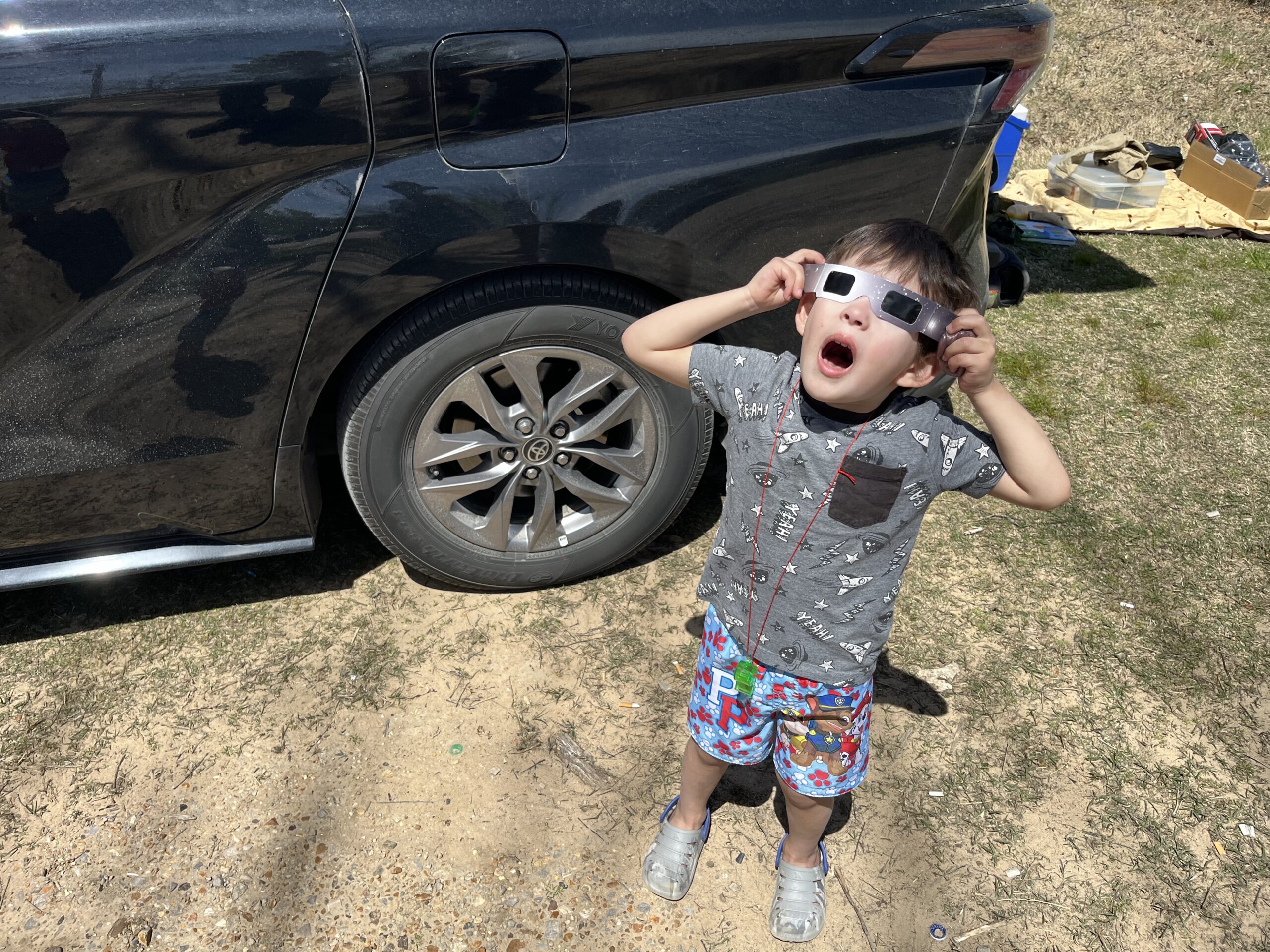
During the partial eclipse leading up to totality, we poked a hole in a piece of paper to observe the crescent shape of light shining through, though a picture of this phenomenon did not capture it too well. One of the nearby trees had enough leaves to observe the weird shadows in a more striking way.
We could easily notice the decrease in temperature, though not enough to need another layer of clothes. Even my 2-year-old commented that it was getting dark. Around that time, the birds began to chirp differently. Venus became visible to the right of the Sun even before totality.
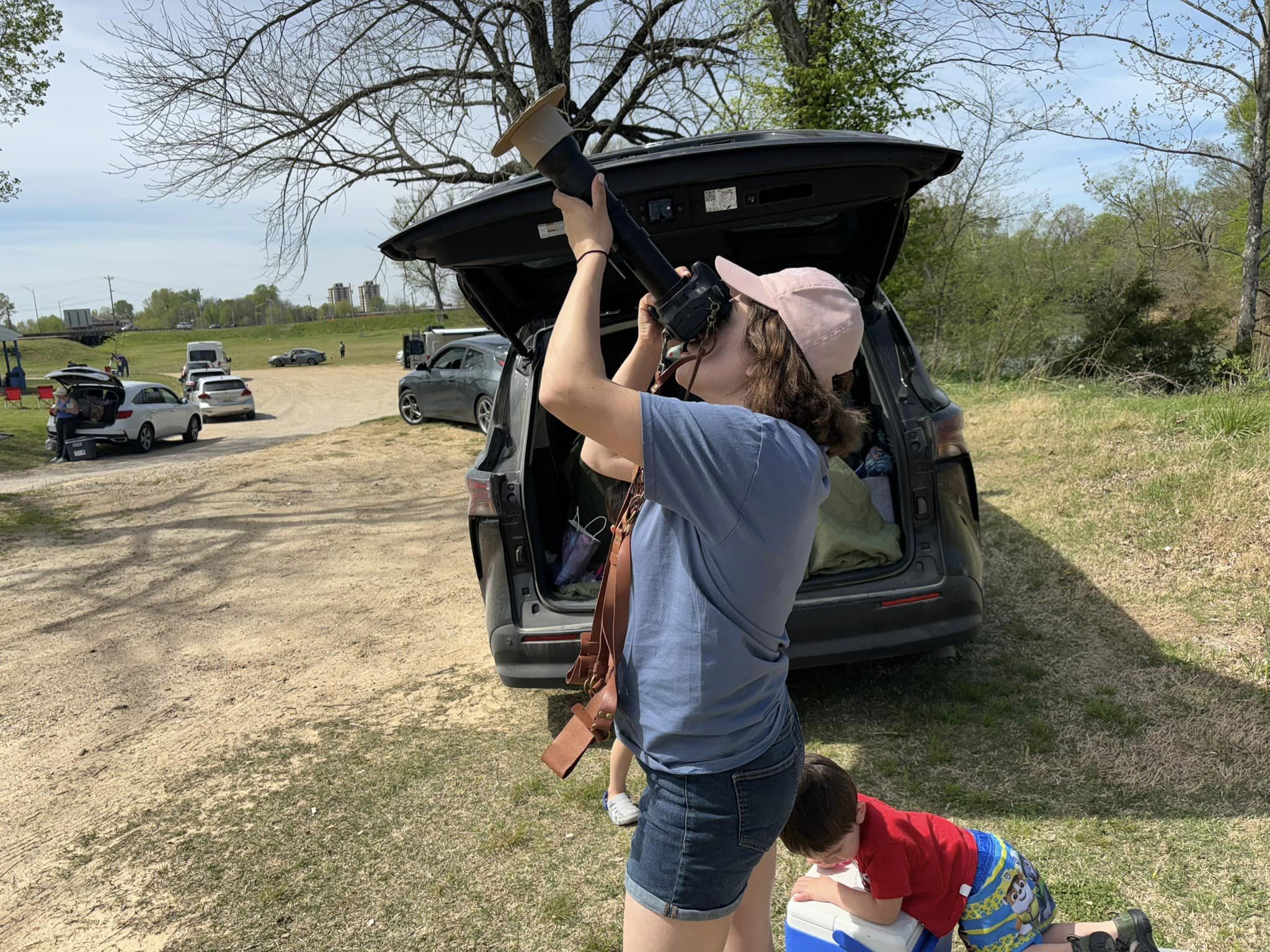
When totality began, lots of people in the park started cheering. It was time to remove filters and enjoy the moment. Through binoculars I noticed–and then even with the naked eye I could see–a pinkish-orange solar prominence on the bottom of the Sun. It seemed to have more intensity in terms of brightness than the Sun’s chromosphere and corona. Jupiter also became visible to the left of the Sun. I pointed out the horizon color change as well.
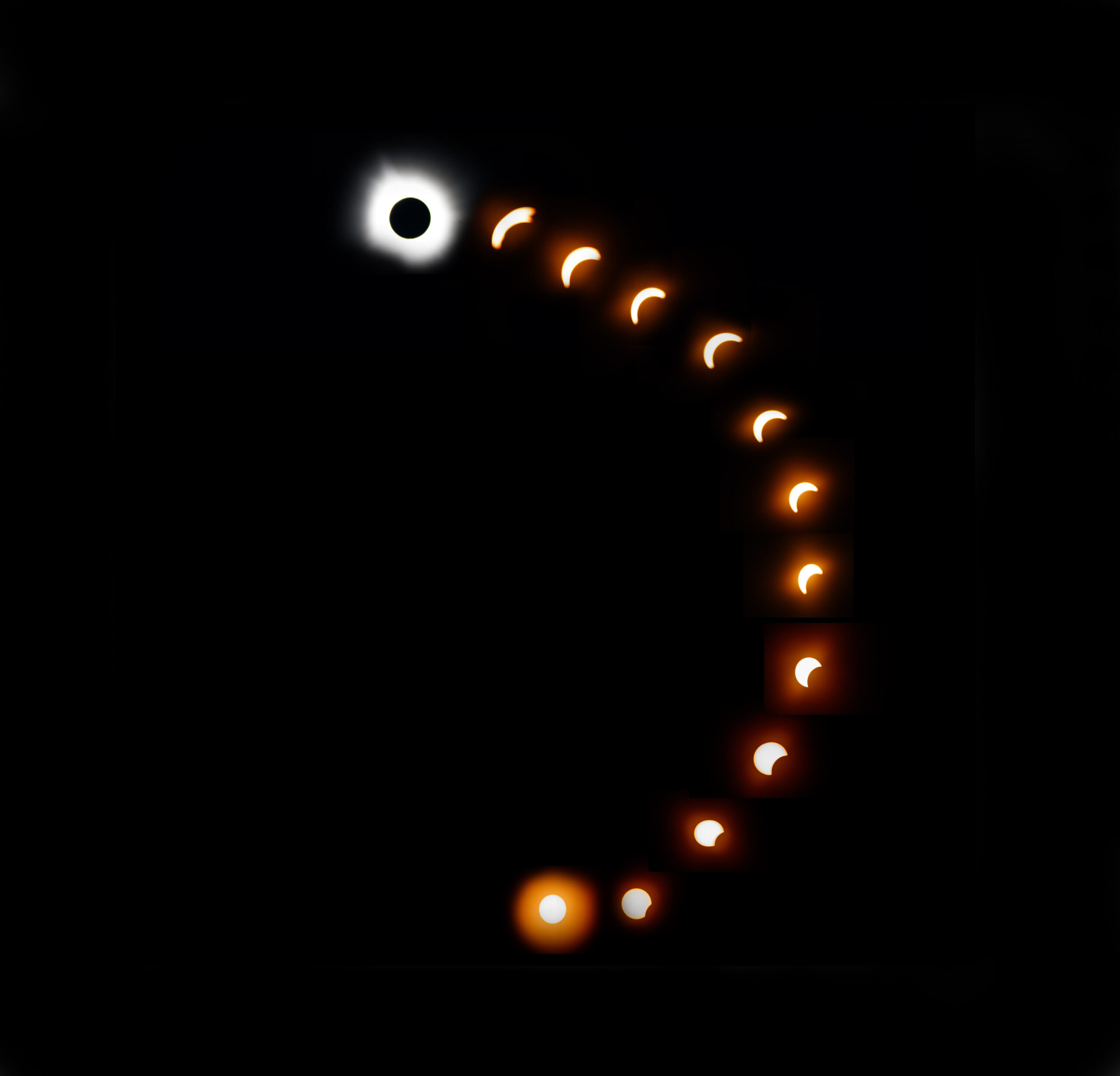
To the left is a collage of my wife Lilia’s eclipse pictures. She took a photo about every 5 minutes or so during the partial eclipse leading up to totality, as well as one before it all started and a few filterless photos during totality (only one is shown here).
Although we didn’t rush out immediately after totality, we did not stick around to watch the rest of the partial eclipse. It had been hard enough watching the kids for the previous few hours. We also had several hours on the road ahead of us.
A few hours before we arrived in Poplar Bluff, my wife had exclaimed, “I’m never doing something like this again!” Right after totality, however, she admitted, “This was totally worth it!”
It turned out that friends and family who stayed in Dallas or other parts of Texas did get to experience totality during some breaks in the clouds. It would have been nice to have been there too, but I know the decisions I made that led us to Poplar Bluff made the most sense with the information I had available to me. Any eclipse is a unique experience, and I do hope to witness as many of these in the future as I can.

